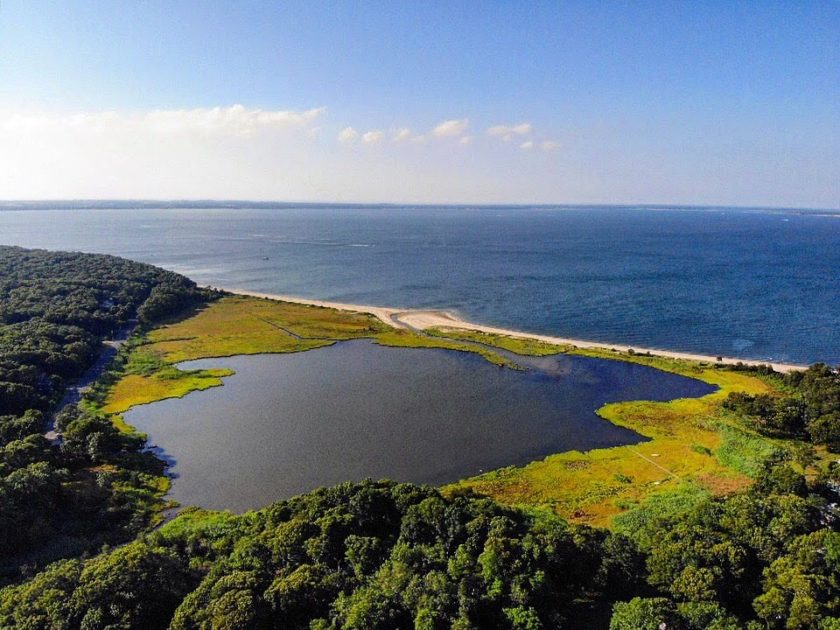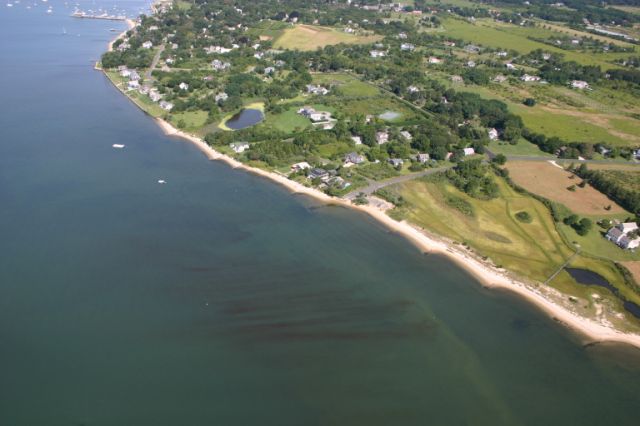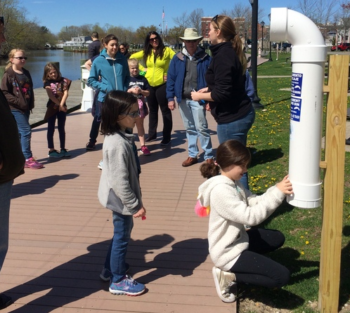Protecting & Restoring Long Island's Peconic Bays
PEP is taking action to reduce nitrogen pollution, harmful algal blooms, pathogens, toxic contaminants, and plastics in the Estuary to support the well-being of people and wildlife.

Fishing, shellfishing, recreation, and tourism on the East End of Long Island are closely tied to the health of the Peconic Estuary. Changes in estuarine health can significantly impact the local economy. The expansion of land development and the increase in human population threaten water quality and the health of these economically important resources and habitats.
Poor water quality is directly linked to human activities on land. In the Peconic Estuary, pollution primarily originates from non-point sources such as septic systems and residential and agricultural fertilizers, rather than point sources like sewage treatment plants. This pollution enters groundwater or surface waters, which then carry it to the estuary.
One of the most serious issues affecting water quality in the Peconic Estuary is excess nitrogen loading, which can cause harmful algae blooms, low dissolved oxygen, and degraded aquatic habitats. Pathogens and toxic contaminants also contribute to water pollution in the estuary, and can make fish and shellfish unsafe to eat. New and emerging contaminants pose a continued risk to ecological and human health in our watershed. Plastics in the aquatic environment are of increasing concern because of their persistence and effect on the environment, wildlife, and human health.
Non-point source pollution is caused by stormwater runoff or polluted ground water. In the Peconic Estuary, the primary sources of non-point source pollution are wastewater from residential on-site septic systems and cesspools, followed by fertilizers and storm water runoff.
Understanding the connection between human actions on land and the health of the Peconic Estuary is crucial to its protection and restoration.
Sources of Water Pollution in the Peconic Estuary

Peconic Estuary Partnership provides program and project updates!
Search here for PEP Program Updates
Harmful Algal Bloom Management>>>
Toxic and Plastic Pollution Control>>>
Monitoring the Estuary’s Health>>>

Harmful algal blooms (HABs) have plagued the Peconic Estuary since at least the mid-1980s, posing significant threats to public and environmental health. These blooms are increasingly frequent across various Suffolk County water bodies. Suffolk County’s marine waters are a crucial economic driver for Long Island, contributing to tourism, commerce, fishing, recreation, and more. Safe and attractive waters are essential for the success of these activities.
Learn more: Pathogen Pollution in the Peconic Estuary
Contamination of Peconic Estuary waters by bacteria and other pathogenic organisms may result in the closure of beaches and shellfisheries thus impacting economic and recreational activities on the East End. At The Peconic Estuary Partnership, we are working with our partners to reduce pathogen pollution caused by stormwater runoff and wastewater pollution.

Learn more:
Toxic Contaminants in the Peconic Estuary
Plastic Pollution in the Peconic Estuary
PEP participates in regional Subwatershed Management efforts intended to reduce the loading of pesticides and herbicides. Some of these programs include our Agriculture Stewardship Plan, the initiatives of our PEP Citizens Advisory Committee, and the Homeowner Rewards Program.
PEP engages a variety of groups to participate in the Pesticide and Fertilize Elimination/Reduction Program. The groups could include golf courses, landscapers, municipal land owners, lawn care supply stores, environmental justice communities, and more.
PEP has also been working on various initiatives to reduce plastics in our waterways.
Sign up for News, Events and Information straight to your inbox.

Notifications